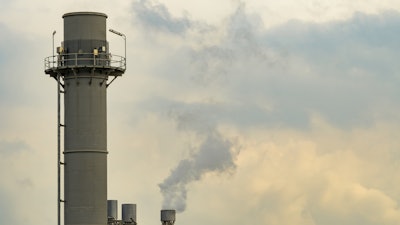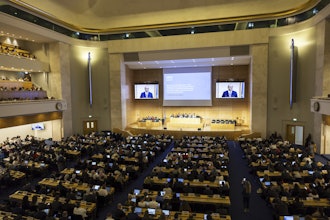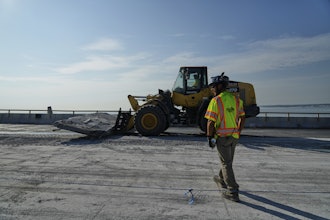
National Association of Manufacturers Managing Vice President of Policy Chris Netram testified before the House Energy and Commerce Committee’s Environment, Manufacturing and Critical Materials Subcommittee Hearing: "Safeguarding American Prosperity and People’s Livelihoods: Legislation To Modernize Air Quality Standards:
Below is his oral testimony as prepared for delivery:
Good morning Chairman Carter, Ranking Member Tonko, and members of the Subcommittee. My name is Chris Netram, and I am the Managing Vice President of Policy at the National Association of Manufacturers.
I appreciate the opportunity to testify on behalf of the manufacturing industry and the 13 million people who make things in America.
Manufacturing supports communities and creates well-paying jobs, pioneers new technologies and powers economic growth and American competitiveness.
But manufacturers are facing a regulatory onslaught.
- The total cost of complying with federal regulations exceeds $3 trillion each year, including $350 billion just on manufacturing.
- The average manufacturer pays more than $29,000 per employee per year to comply with federal regulations, a figure that rises to more than $50,000 for small manufacturers.
$50,000 per employee, every single year. For a small company with just 20 employees, that’s a million dollars each year diverted from job creation or R&D.
The EPA’s unworkable PM2.5 standard is the latest piece of this regulatory onslaught. This new rule will make it much more difficult to create jobs and build advanced factories here in the United States.
That’s because the new standard of 9 is in line with background levels of particulate matter in many parts of the country. In other words, the standard is now so low that companies will be expected to reduce their emissions below what naturally occurs.
Making matters worse, most particulate matter comes from non-industrial sources. The vast majority of emissions come from sources like wildfires, controlled burns, crop dust and unpaved roads. Industry accounts for less than 20% of PM2.5—yet the onus will fall on manufacturing to meet the EPA’s unrealistic standard.
In practice, hundreds of counties across the country could be forced into non-attainment. That means that it will be extraordinarily difficult for them to attract manufacturing investment. Roads, bridges, factories: these important projects will be stalled if manufacturers can’t get permits to build them.
With a PM standard as low as 9, it will be virtually impossible for manufacturers to have any headroom that allows for growth. Companies that want to invest in communities at or near non-attainment levels will be hard-pressed to guarantee that new shovels in the ground won’t push PM levels above 9.
There will be an economic cost to this change. A recent NAM study that analyzed a PM standard of 8, slightly more stringent than what was finalized, found that our nation would lose up to $200 billion in economic activity and nearly a million jobs.
Moreover, the EPA’s approach will directly undermine the President’s commitment to manufacturing and Congress’ important work to support manufacturing growth here at home.
The Bipartisan Infrastructure Law, the CHIPS and Science Act, tax reform, these bills were designed to spur investment, but unbalanced regulations and permitting delays threaten that progress.
In addition, the EPA’s actions make the U.S. a global outlier. Europe’s current PM standard is 25; China’s is 35. If we want the next manufacturing dollar to be spent in America rather than abroad, a standard of 9 is simply not feasible.
Manufacturers urge Congress to act immediately. As a first step, Congress should pass a CRA overturning the rule.
At the same time, Congress should reform the NAAQS process. The Committee’s discussion draft reflects a more tailored approach that would take multiple factors into consideration: for starters, the economic effect and the impact on America’s competitiveness in addition to public health.
- First, the draft would extend the EPA’s review period to 10 years, providing states and businesses much-needed certainty.
- The draft also would allow the EPA to count wildfire mitigation as an exceptional event, rather than holding manufacturers accountable for PM they can’t control.
- And the draft would require the EPA to consider economic effects in its NAAQS analysis, allowing the agency to take a holistic view of its standards.
These reforms reflect the tremendous progress we’ve made since the passage of the Clean Air Act. The U.S. has seen a 78% reduction in PM over the last 50 years, in large part due to manufacturers’ investments in cleaner production. We are now at a point where industry contributes less than a fifth of all PM2.5; far less than fires and dust that have nothing to do with manufacturing.
In short, Congress must act to reverse this damaging decision and reform the NAAQS process.
I want to thank the Subcommittee for shining a light on the EPA’s regulatory overreach, and I look forward to answering any questions you may have.






















